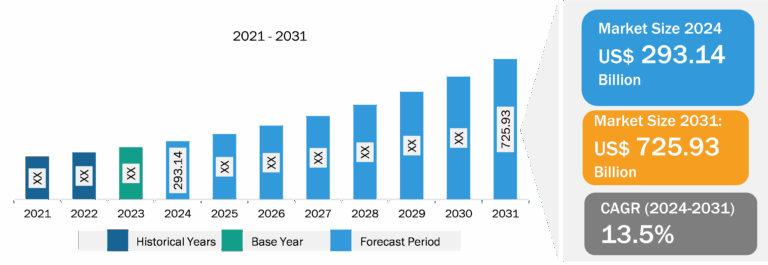
3D Reconstruction Technology Market
Technological Advancements and Product Innovations to Fuel 3D Reconstruction Technology Market Growth During Forecast Period
The technological advancements and product innovations in 3D reconstruction equipment, such as software, cameras, scanners, and printers, enable accurate and efficient measurement and testing of 3D models. This equipment helps ensure the quality, security, and compatibility of 3D models and services, as well as comply with industry standards and regulations. Some examples of technological advancement and product innovation in the 3D reconstruction technology market are the use of deep learning techniques and large training data sets to recover the 3D geometry and structure of objects from image data without using any complex camera calibration process. The 3D printing technology can be used to create replicas of 3D models for various purposes, such as medical surgery, cultural heritage preservation, and engineering design. The use of augmented reality (AR) and virtual reality (VR) technologies provides users with immersive virtual experiences based on 3D models, such as trying on items, visiting historical sites, and playing games. These technological advancements and product innovations have increased the demand and applications of 3D reconstruction technology in various sectors, such as cultural heritage & museums, films & games, healthcare, and military & defense. They have also enhanced the performance and functionality of 3D reconstruction technology, making it more reliable and efficient. Therefore, technological advancement and product innovation are key driving factors for the 3D reconstruction technology market.

3D Reconstruction Technology Market: Industry Overview
The 3D reconstruction technology market is segmented based on type, component, deployment, enterprise size, end-use industry, and geography. In terms of type, the market is segmented into active 3D reconstruction and passive 3D reconstruction. Based on component, the market is bifurcated into software and services. Based on deployment, the market is segmented into on-premises and cloud. Based on enterprise size, the market is segmented into large enterprises and SMEs. Based on end-use industry, the market is segmented into automotive, education, aerospace & defense, healthcare, media & entertainment, construction & architecture, government & public safety, and others. Based on geography, the market is segmented into North America, Europe, Asia Pacific, the Middle East & Africa, and South America.
The Europe 3D reconstruction technology market is a growing field that involves creating digital models of physical objects or scenes from various sources of data, such as images, videos, or scans. The presence of established industry players for 3D reconstruction that have a strong history of technical expertise in 3D technology plays a vital role in the expansion of market in Europe. Most of the 3D technology companies are centered in countries in Western Europe, such as Germany, France, and the UK. These companies offer innovative and advanced solutions for 3D reconstruction, such as software, cameras, scanners, and printers that enable accurate and efficient measurement and testing of 3D models. The increasing demand for 3D reconstruction technology in various sectors, such as cultural heritage & museums, films & games, healthcare, and military & defense is also another factor driving 3D reconstruction market in Europe. These sectors use 3D reconstruction technology to preserve and restore historical sites, create realistic and immersive virtual environments, enhance medical imaging and diagnosis, and improve training and simulation. The stable government funding and support for 3D reconstruction technology, especially in developing countries, facilitate the development and adoption of 3D reconstruction technology. The government also provides spectrum allocation, funding, and public-private partnerships for 3D reconstruction projects, as well as invests in 3D research and innovation.
The Europe 3D reconstruction technology market is expected to benefit from these regional trends, as they indicate the increasing demand and applications of 3D reconstruction technology in various end-use industries. The market is also expected to face some challenges, such as the high cost of equipment, the lack of a skilled workforce, and regulatory hurdles. However, these challenges can be overcome by investing in research and development, training and education, and collaboration and standardization.
3D Reconstruction Technology Market: Competitive Landscape and Key Developments
Autodesk Inc.; EOS imaging; Intel Corporation; Koninklijke Philips N.V; PhotoModeler Technologies; Pix4D SA; Epic Games, Inc.; Skyline Software Systems Inc.; Thermo Fisher Scientific Inc.; and Agisoft are among the leading market players profiled in the 3D reconstruction technology market report. Several other essential market players were analyzed for a holistic view of the market and its ecosystem. The report provides detailed market insights, which help the key players strategize their market growth. A few developments are mentioned below:
- In August 2022, a team of researchers from the University of California, Berkeley, and Google Research developed a novel method for 3D reconstruction from a single image using a convolutional neural network (CNN). The method, called Neural Radiance Fields (NeRF), can produce high-quality and photorealistic 3D models of complex and diverse scenes, such as natural landscapes, animals, and human faces. The method can also handle challenging cases, such as transparent and reflective objects, occlusions, and varying lighting conditions.
- In June 2022, a team of researchers from the University of Oxford and the University of Bath developed a new technique for 3D reconstruction from multiple images using a generative adversarial network (GAN). The technique, called GANFIT, can reconstruct detailed and accurate 3D models of human faces and bodies from unconstrained images, such as selfies, portraits, and group photos. The technique can also handle diverse poses, expressions, clothing, and backgrounds, as well as partial occlusions and low-resolution images.





